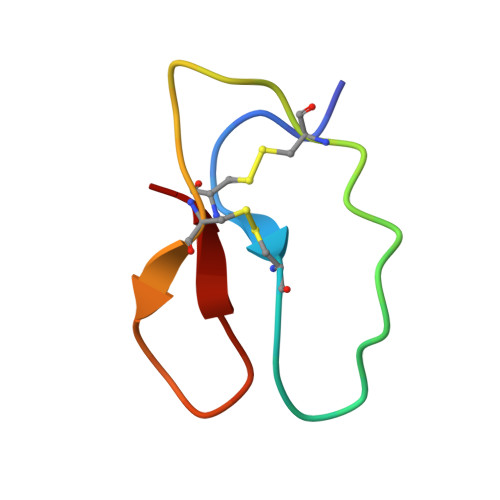Three-dimensional structures of three engineered cellulose-binding domains of cellobiohydrolase I from Trichoderma reesei.
Mattinen, M.L., Kontteli, M., Kerovuo, J., Linder, M., Annila, A., Lindeberg, G., Reinikainen, T., Drakenberg, T.(1997) Protein Sci 6: 294-303
- PubMed: 9041630
- DOI: https://doi.org/10.1002/pro.5560060204
- Primary Citation of Related Structures:
1AZ6, 1AZH, 1AZJ, 1AZK - PubMed Abstract:
Three-dimensional solution structures for three engineered, synthetic CBDs (Y5A, Y31A, and Y32A) of cellobiohydrolase I (CBHI) from Trichoderma reesei were studied with nuclear magnetic resonance (NMR) and circular dichroism (CD) spectroscopy. According to CD measurements the antiparallel beta-sheet structure of the CBD fold was preserved in all engineered peptides. The three-dimensional NMR-based structures of Y31A and Y32A revealed only small local changes due to mutations in the flat face of CBD, which is expected to bind to crystalline cellulose. Therefore, the structural roles of Y31 and Y32 are minor, but their functional importance is obvious because these mutants do not bind strongly to cellulose. In the case of Y5A, the disruption of the structural framework at the N-terminus and the complete loss of binding affinity implies that Y5 has both structural and functional significance. The number of aromatic residues and their precise spatial arrangement in the flat face of the type I CBD fold appears to be critical for specific binding. A model for the CBD binding in which the three aligned aromatic rings stack onto every other glucose ring of the cellulose polymer is discussed.
Organizational Affiliation:
VTT, Chemical Technology, Finaland. maija.mattinen@vtt.fi














